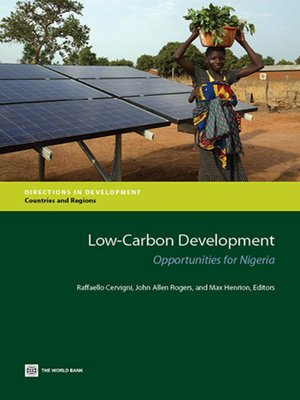Low-Carbon Development
ebook ∣ Opportunities for Nigeria · Directions in Development
By Raffaello Cervigni

Sign up to save your library
With an OverDrive account, you can save your favorite libraries for at-a-glance information about availability. Find out more about OverDrive accounts.
Find this title in Libby, the library reading app by OverDrive.



Search for a digital library with this title
Title found at these libraries:
| Library Name | Distance |
|---|---|
| Loading... |
The Federal Government of Nigeria has adopted an ambitious strategy to make Nigeria the world's 20th largest economy by 2020. Sustaining such a pace of growth will entail rapid expansion of the level of activity in key carbon-emitting sectors, such as power, oil and gas, agriculture and transport. In the absence of policies to accompany economic growth with a reduced carbon foot-print, emissions of greenhouse gases could more than double in the next two decades.
This study finds that there are several options for Nigeria to achieve the development objectives of vision 20:2020 and beyond, but stabilizing emissions at 2010 levels, and with domestic benefits in the order of 2 percent of GDP. These benefits include cheaper and more diversified electricity sources; more efficient operation of the oil and gas industry; more productive and climate –resilient agriculture; and better transport services, resulting in fuel economies, better air quality, and reduced congestion. The study outlines several actions that the Federal Government could undertake to facilitate the transition towards a low carbon economy, including enhanced governance for climate action, integration of climate consideration in the Agriculture Transformation Agenda, promotion of energy efficiency programs, scale-up of low carbon technologies in power generation (such as renewables an combined cycle gas turbines), and enhance vehicle fuel efficiency.







